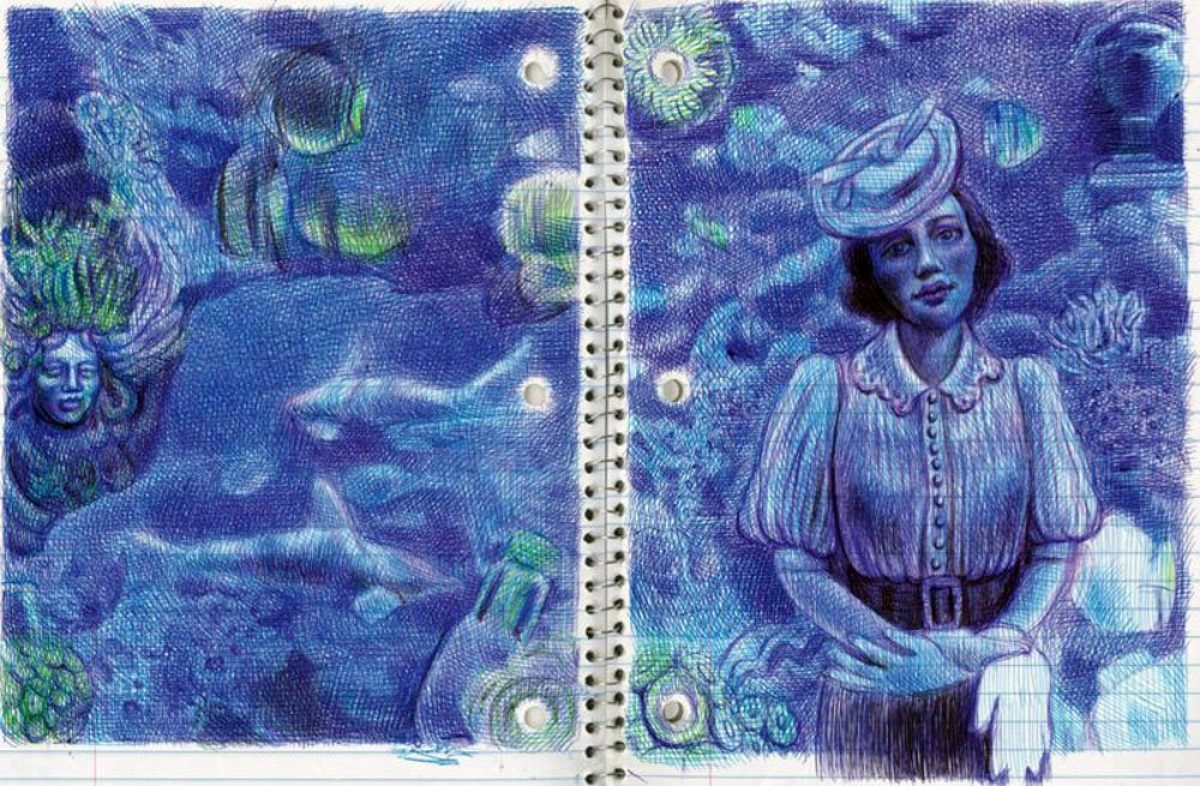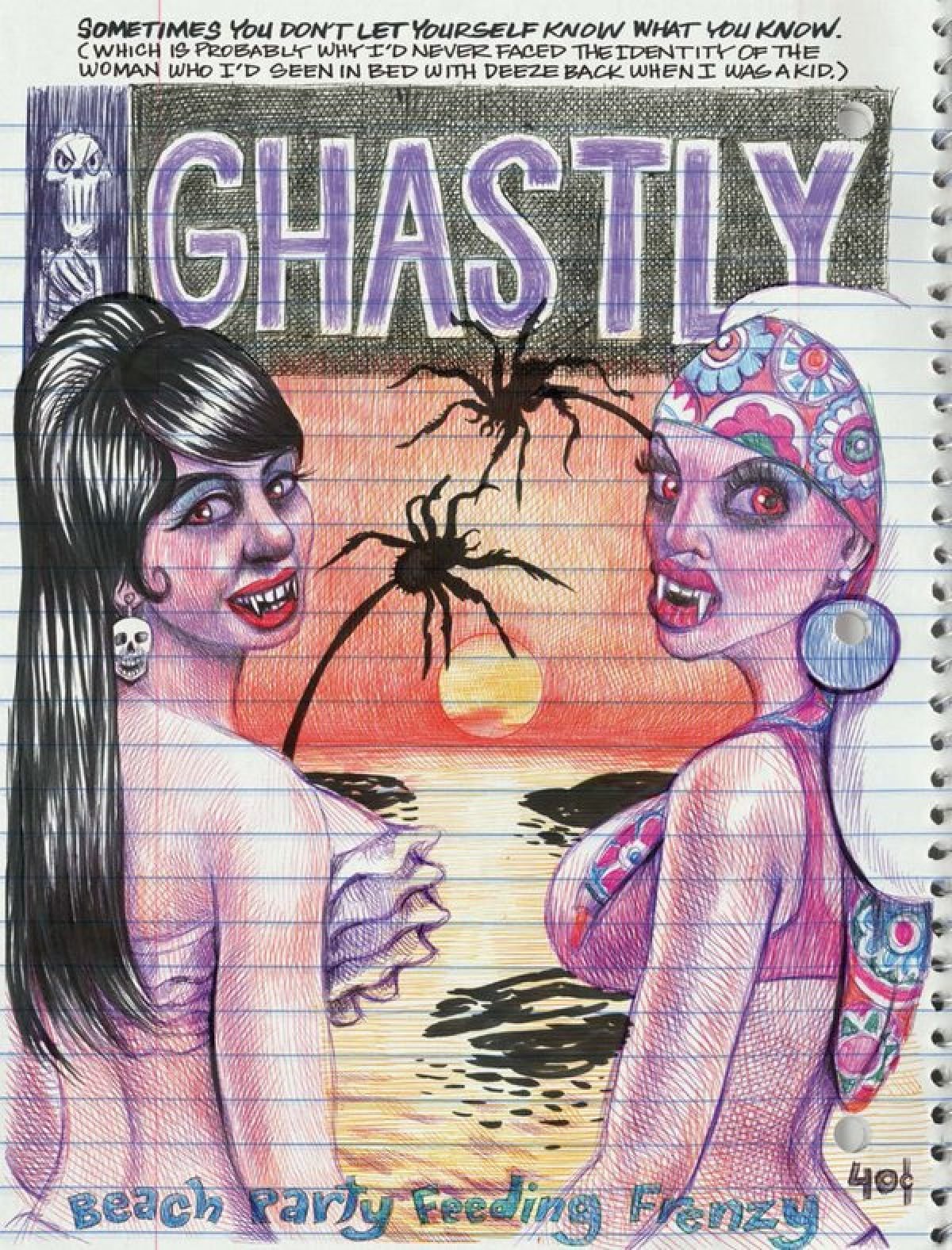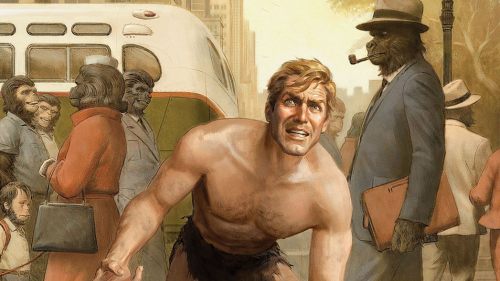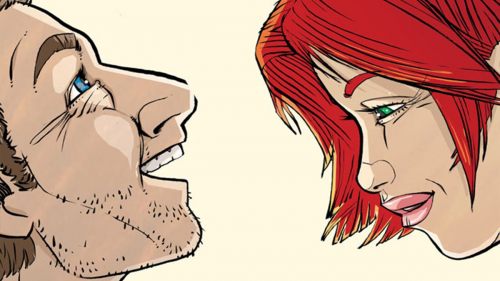MY FAVORITE THING IS MONSTERS Is A Dark And Unusual Masterpiece
Historical fiction. Murder mystery. Family drama. All told through the eyes of a young misfit girl in 1960s Chicago who is obsessed with monster movies and fine art. My husband gave me Emil Ferris’ My Favorite Thing is Monsters for my birthday last month with a note: “As soon as I heard about it, I knew it would be something you’re into. It’s all of your interests overlapping (except maybe Victorian literature).”
He’s right, but the value of My Favorite Thing is Monsters goes beyond my very specific personal preferences into mandatory reading for anyone who has ever felt like a weirdo, fretted over family members, suffered from ostracism or oppression, watched an old monster movie and wanted to live inside of it. It’s a breathtaking tome, big enough to hug, and believe me, you’ll want to hug this book. Every page – even the copyright page, the acknowledgements page, the author bio – appears to be scribbled and stunningly cross-hatched in the notebook of Karen Reyes, a 10-year-old artist with dark proclivities and an honest heart.
You will love Karen. You might be Karen. She draws herself the way she wants to see herself: not as a small, quiet girl unable to stop the people she loves from hurting, not as an unpopular kid who gets bullied in school and lost her best friend (and the love of her young life, Missy) to a snobby group of more conventional girls. Karen draws herself as a werewolf – a werewolf detective, searching for clues in the mysterious death of her upstairs neighbor Anka Silverberg, a beautiful but haunted Holocaust survivor.
But Anka’s murder isn’t the only mystery Karen wants to solve. She worships her older brother Deeze but does not understand him. He has taught her about art, taken her to museums and loaned her books about the masters. He protects her and loves her, but there’s a darkness inside Deeze that Karen calls the dragon. Karen and Deeze are very close with their loving but superstitious mother, but when illness strikes Karen is powerless to help. And most of all Karen wants to solve the mystery of why Missy – whom she loves, and whom she knows loves her – would rather go shopping with the “pink mob” than watch scary movies with her best friend and blood sister.

Thanks to a series of audiocassettes Karen finds over the course of her investigation, the narrative branches out from Karen’s small but compelling world into Anka’s experiences growing up in Nazi Berlin. The perspective shifts from Karen’s to Anka’s and back again, each girl living in a critical and contentious time in history. We see Anka’s body trafficked to the highest bidder and her soul irrevocably fractured long before she’s forced to sew a yellow star onto her coat. We see the 1968 West Side riots through young Karen’s eyes, as she begins to understand the impact Martin Luther King Jr’s assassination has had on her community and her family. We grow to know Anka as we know Karen, and we grow to care for them both, to appreciate, as they do, their avenues of escape from these bitter realities: Anka’s obsession with Greek mythology, Karen’s love of beautiful art and shadowy monsters.


Ferris spins a tale as vast and changing as the sea, but her grasp on every turn and trick is assured. We never know from one chapter to the next precisely where we stand, but we’ve put ourselves in the hands of an inspired captain. This is her journey, and we are privileged to be a part of it.
Ferris’ own story is as compelling as the book that spun out of it. In 2002, Ferris contracted West Nile virus from a mosquito bite. She was paralyzed from the waist down and had lost the use of her drawing hand. The then 40-year-old mother taught herself to draw all over again and threw herself into the fifteen-year process of writing and illustrating My Favorite Thing is Monsters. She told the New York Times, “The virus both impelled me and scared me at the same time. I honed my focus and determination, and the book saw me through.”
We see something of that fierce inducement in every line of My Favorite Thing is Monsters. This, more than most books, feels like a story begging to be told, bounding from page to page, compelling us to turn again and again until we’ve reached the final scribbles – or not quite final, as the second volume of Monsters will be published from Fantagraphics in April (eight months away!? I’ve already pre-ordered it). The book feels nearly obsessively rendered, with each chapter breaking with the recreation of a monster magazine Karen is reading at that point in the narrative.

It’s both a fast read and a slow one. You could fly through this thing thanks to the propulsion of its narrative, but every page begs you to pore over it in minute detail, absorbing as much of the exquisite art as possible. There is so much to admire here: the art and history, the mystery and monsters. But the greatest treasure within My Favorite Thing is Monsters is Karen herself. Every part of Karen marks her for outsiderdom: her cultural heritage, her place in society, her scandalous family secrets, her sexuality, her preoccupation with all things dark and strange. Herein is an extraordinary protagonist whose very existence has the potential to heal something inside of anyone who reads this book. This little wolfgirl certainly healed something inside me.





